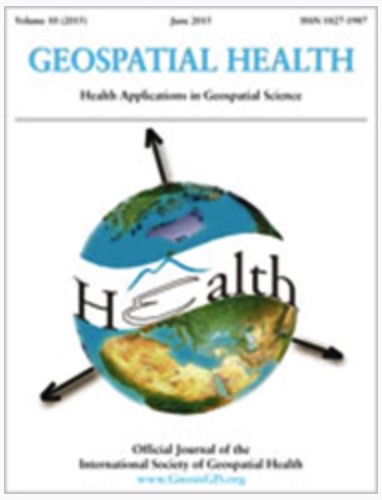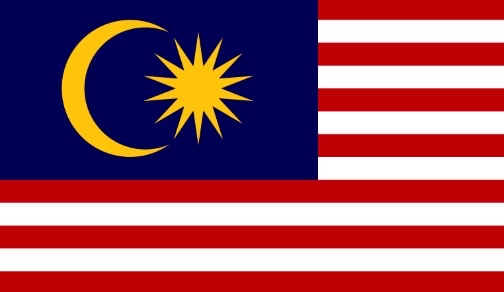A spatiotemporal analysis of COVID-19 transmission in Jakarta, Indonesia for pandemic decision support

Published: 14 January 2022
Abstract Views: 3601
PDF: 425
HTML: 82
HTML: 82
Publisher's note
All claims expressed in this article are solely those of the authors and do not necessarily represent those of their affiliated organizations, or those of the publisher, the editors and the reviewers. Any product that may be evaluated in this article or claim that may be made by its manufacturer is not guaranteed or endorsed by the publisher.
All claims expressed in this article are solely those of the authors and do not necessarily represent those of their affiliated organizations, or those of the publisher, the editors and the reviewers. Any product that may be evaluated in this article or claim that may be made by its manufacturer is not guaranteed or endorsed by the publisher.
Similar Articles
- Sarah Isnan, Ahmad Fikri bin Abdullah, Abdul Rashid Shariff, Iskandar Ishak, Sharifah Norkhadijah Syed Ismail, Maheshwara Rao Appanan, Moran’s I and Geary’s C: investigation of the effects of spatial weight matrices for assessing the distribution of infectious diseases , Geospatial Health: Vol. 20 No. 1 (2025)
- Peter Nezval, Takeshi Shirabe, Design and implementation of a spatial database for analysis of wheelchair accessibility , Geospatial Health: Vol. 20 No. 1 (2025)
- Ruy Brayner Oliveira Filho, Karla Campos Malta, Vania Lucia Assis Santana, Mabel Hanna Vance Harrop, Danilo Tancler Stipp, Daniel Friguglietti Brandespim, Rinaldo Aparecido Mota, José Júnior Wilton Pinheiro, Spatial characterization of Leptospira spp. infection in equids from the Brejo Paraibano micro-region in Brazil , Geospatial Health: Vol. 8 No. 2 (2014)
- Jia-Cheng Zhang, Wen-Dong Liu, Qi Liang, Jian-Li Hu, Jessie Norris, Ying Wu, Chang-Jun Bao, Fen-Yang Tang, Peng Huang, Yang Zhao, Rong-Bin Yu, Ming-Hao Zhou, Hong-Bing Shen, Feng Chen, Zhi-Hang Peng, Spatial distribution and risk factors of influenza in Jiangsu province, China, based on geographical information system , Geospatial Health: Vol. 8 No. 2 (2014)
- Naoko Nihei, Osamu Komagata, Kan-ichiro Mochizuki, Mutsuo Kobayashi, Geospatial analysis of invasion of the Asian tiger mosquito Aedes albopictus: competition with Aedes japonicus japonicus in its northern limit area in Japan , Geospatial Health: Vol. 8 No. 2 (2014)
- Hassan M. Khormi, Lalit Kumar, Climate change and the potential global distribution of Aedes aegypti: spatial modelling using geographical information system and CLIMEX , Geospatial Health: Vol. 8 No. 2 (2014)
- Constança S. Barbosa, Verônica S. Barbosa, Wheverton C. Nascimento, Otavio S. Pieri, Karina C. G. M. Araújo, Study of the snail intermediate hosts for Schistosoma mansoni on Itamaracá Island in northeast Brazil: spatial displacement of Biomphalaria glabrata by Biomphalaria straminea , Geospatial Health: Vol. 8 No. 2 (2014)
- Luis E. Escobar, Andrés Lira-Noriega, Gonzalo Medina-Vogel, A. Townsend Peterson, Potential for spread of the white-nose fungus (Pseudogymnoascus destructans) in the Americas: use of Maxent and NicheA to assure strict model transference , Geospatial Health: Vol. 9 No. 1 (2014)
- Constantin Daraban, Carla Murino, Giuseppe Marzatico, Giuseppina Mennonna, Gerardo Fatone, Luigi Auletta, Fabiana Micieli, Vasile Vulpe, Leonardo Meomartino, Using geographical information system for spatial evaluation of canine extruded disc herniation , Geospatial Health: Vol. 9 No. 1 (2014)
- Wendelin Moser, Helena Greter, Christian Schindler, Fiona Allan, Bongo N. R. Ngandolo, Daugla D. Moto, Jürg Utzinger, Jakob Zinsstag, The spatial and seasonal distribution of Bulinus truncatus, Bulinus forskalii and Biomphalaria pfeifferi, the intermediate host snails of schistosomiasis, in N'Djamena, Chad , Geospatial Health: Vol. 9 No. 1 (2014)
You may also start an advanced similarity search for this article.












